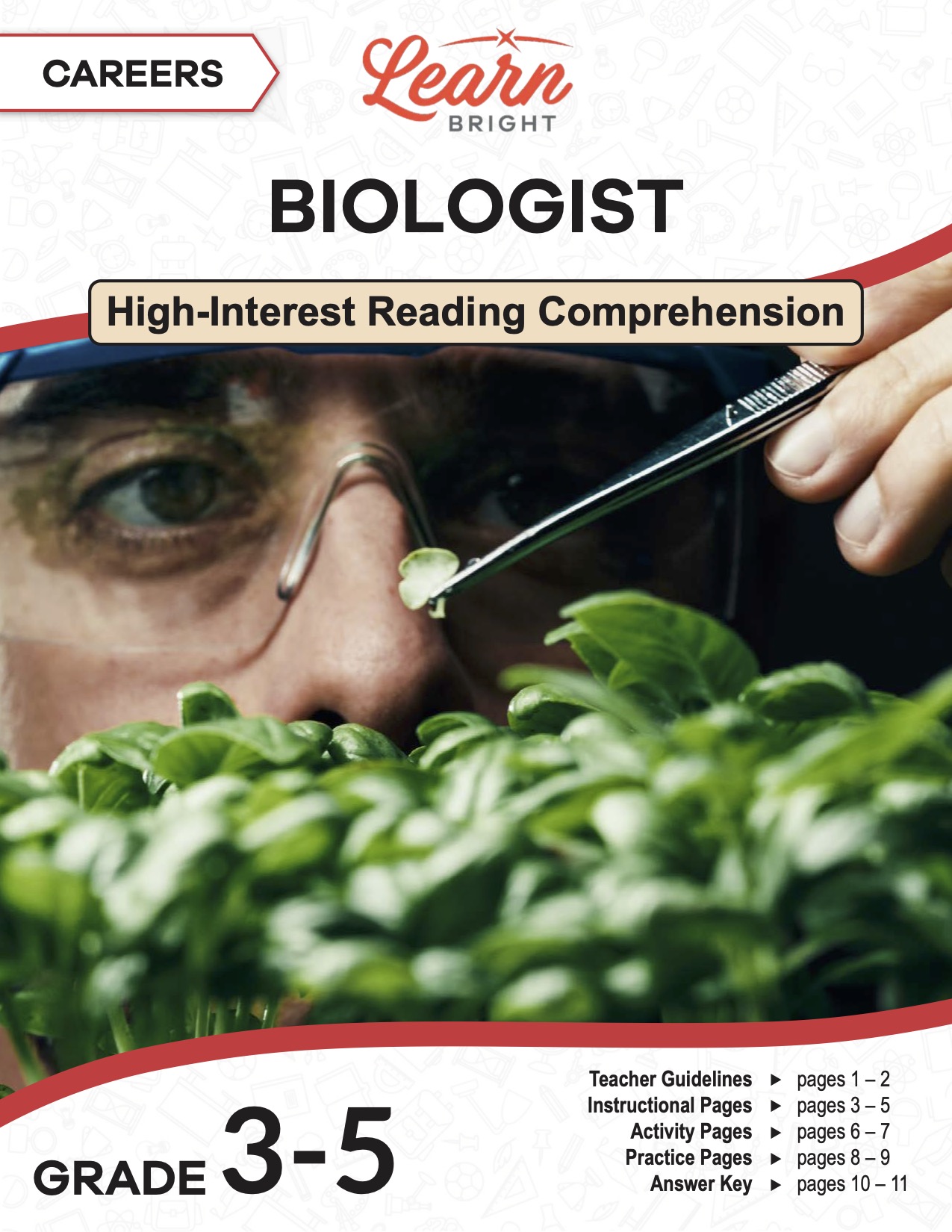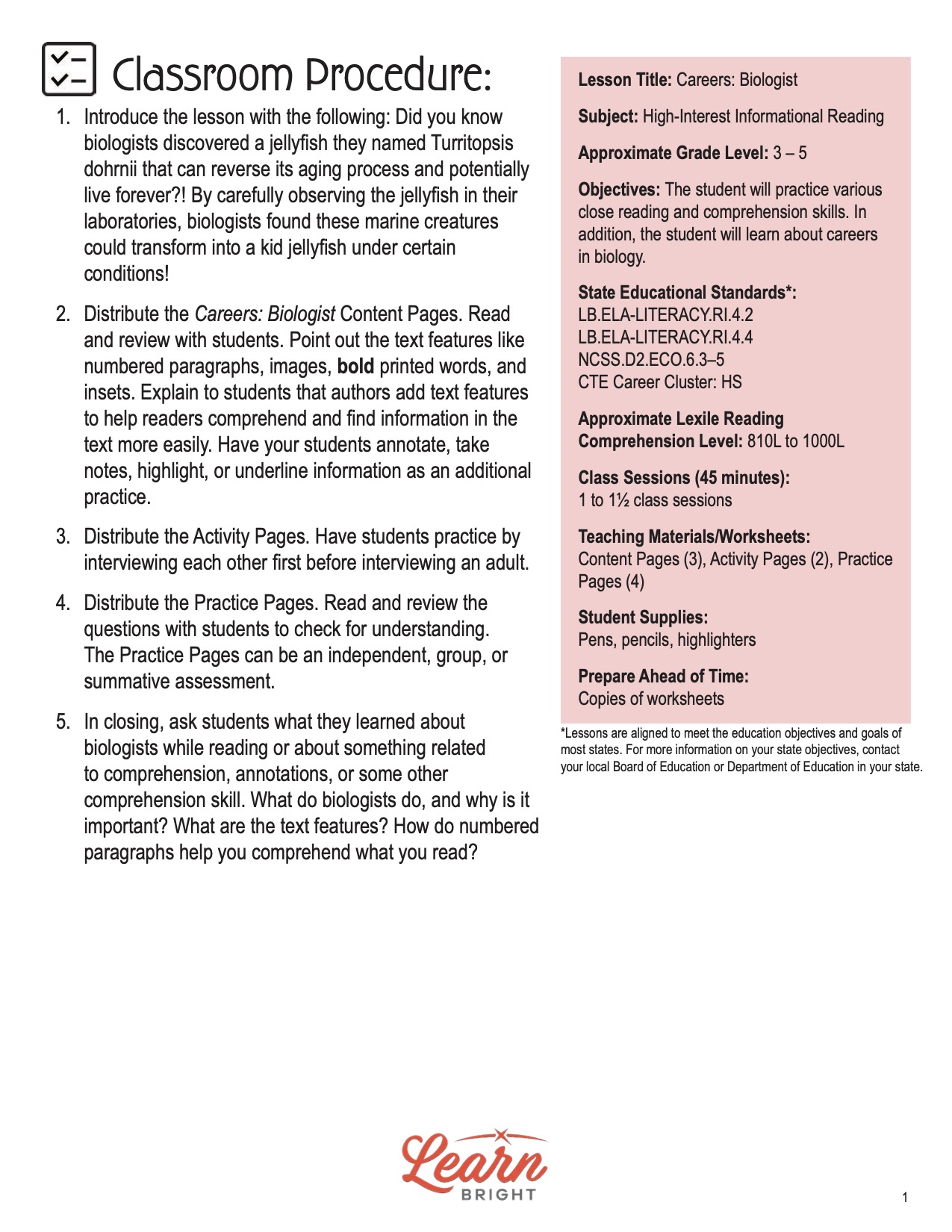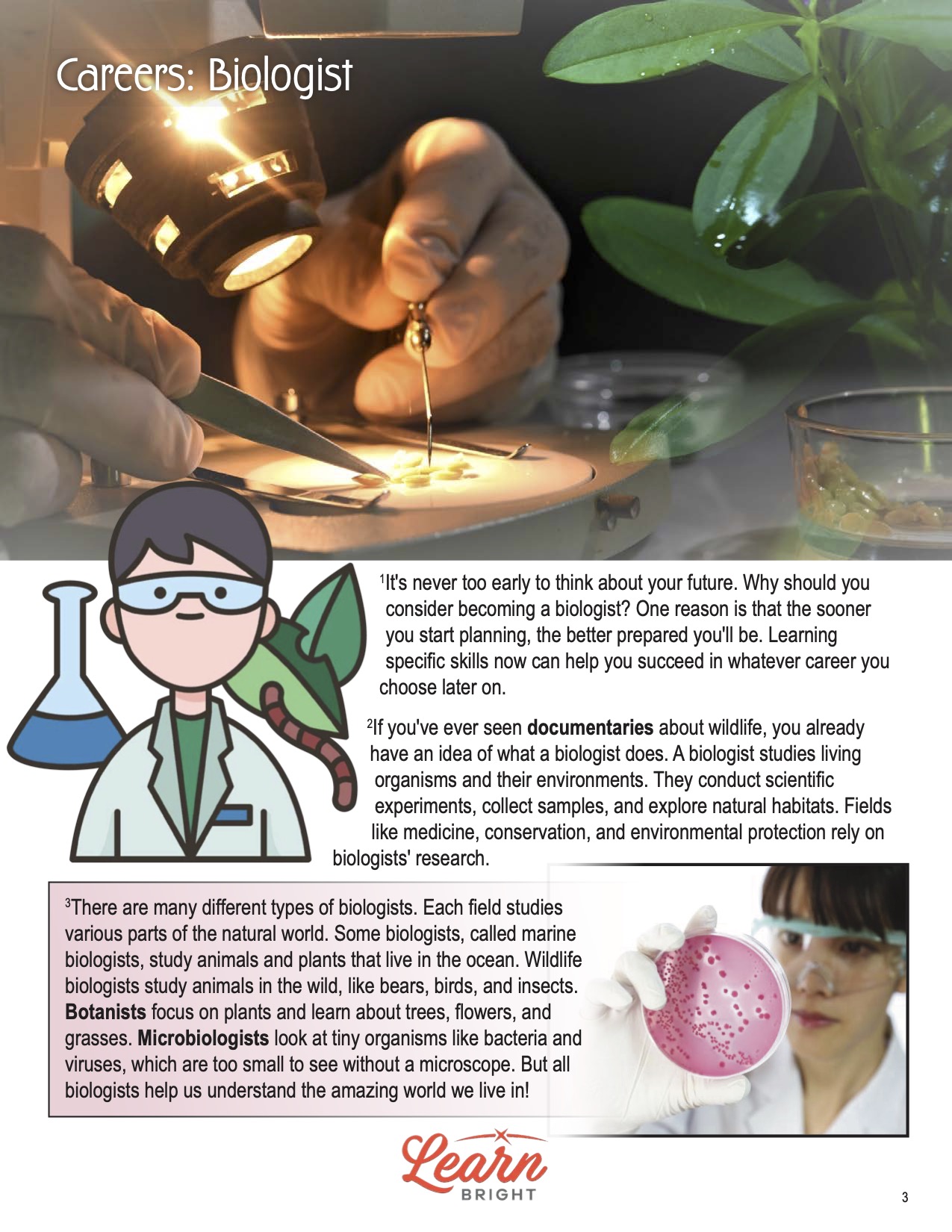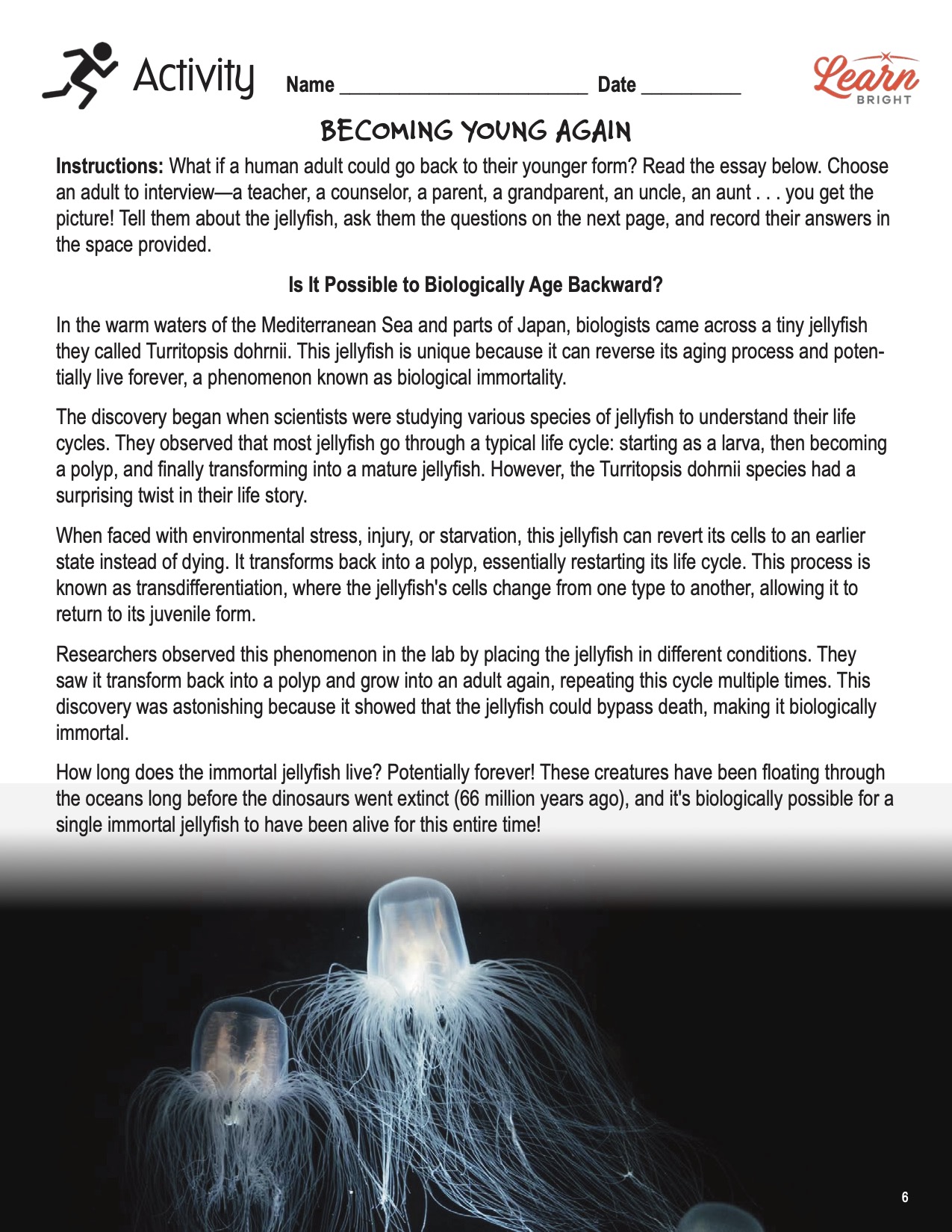Description
What our Careers: Biologist lesson plan includes
Lesson Objectives and Overview: Careers: Biologist is a high-interest reading comprehension lesson plan. As such, students will practice various close reading and comprehension skills. In addition, they will learn about about careers in biology. This lesson is for students in 3rd grade, 4th grade, and 5th grade.
Classroom Procedure
Every lesson plan provides you with a classroom procedure page that outlines a step-by-step guide to follow. You do not have to follow the guide exactly. The guide helps you organize the lesson and details when to hand out worksheets. It also lists information in the yellow box that you might find useful. You will find the lesson objectives, state standards, and number of class sessions the lesson should take to complete in this area. In addition, it describes the supplies you will need as well as what and how you need to prepare beforehand.
Teacher Notes
The teacher notes page provides an extra paragraph of information to help guide the lesson. It explains that you can teach this lesson in a whole-class setting or as an independent, small-group activity. You can use the blank lines to write down any other ideas or thoughts you have about the topic as you prepare.
CAREERS: BIOLOGIST LESSON PLAN CONTENT PAGES
What Is a Biologist?
The Careers: Biologist lesson plan contains three content pages. It’s never too early to think about your future. Why should you consider becoming a biologist? One reason is that the sooner you start planning, the better prepared you’ll be. Learning specific skills now can help you succeed in whatever career you choose later on.
If you’ve ever seen documentaries about wildlife, you already have an idea of what a biologist does. A biologist studies living organisms and their environments. They conduct scientific experiments, collect samples, and explore natural habitats. Fields like medicine, conservation, and environmental protection rely on biologists’ research.
What They Do and Why
There are many different types of biologists. Each field studies various parts of the natural world. Some biologists, called marine biologists, study animals and plants that live in the ocean. Wildlife biologists study animals in the wild, like bears, birds, and insects. Botanists focus on plants and learn about trees, flowers, and grasses. Microbiologists look at tiny organisms like bacteria and viruses, which are too small to see without a microscope. But all biologists help us understand the amazing world we live in!
There are about 100,000 biologists in the United States, and their work requires highly specialized skills. Biologists work in many different places. They often work at universities and research centers, studying life forms and teaching students. Some work for government agencies to help protect the environment. Others work at zoos and nature reserves, caring for animals and educating the public about conservation. Biologists also spend time in the field, whether in forests, oceans, or grasslands, collecting samples and conducting research.
Biological research is crucial because it helps us understand our world and its life forms. Scientists can discover new species and develop medicines from plants and animals. Studying biology helps us understand diseases, which is vital for developing vaccines. It also allows us to learn about different ecosystems, which is essential for conservation efforts to help endangered animals and plants. Understanding biology can protect our planet and ensure a healthier future for all living things.
Logistics of the Career
Depending on their role and experience, a biologist’s salary can range from $55,000 to $125,000 annually. Highly experienced biologists can earn significantly more, especially those who lead research projects or work in specialized fields.
Most biologists work full-time, often starting their day by analyzing data from previous research. Imagine waking up early to join a team in a rainforest, where you spend the morning observing animal behavior and collecting plant samples. After lunch, you might set up experiments to study ecosystem interactions. In the afternoon, you could collaborate with other scientists to plan future studies or work in a lab analyzing DNA samples.
Biologists use many cool tools in their work! They have field equipment like traps and cameras to observe and study animals in their natural habitats. Microscopes help them examine tiny organisms and cells. Computers and specialized software allow them to analyze data and model biological processes. Scuba gear and drones enable them to explore underwater ecosystems and remote areas.
Education and Training
You will want to take STEM classes and lots of science classes in elementary, middle, and high school. You should like working outdoors as well as indoors in a lab setting. Biologists do lots of fieldwork. To become a biologist, you’ll need a bachelor’s degree in biology, environmental science, or a related field. Many biologists have advanced degrees and specialize in genetics, ecology, or marine biology. In addition to education, biologists undergo rigorous training, which may include field research techniques, laboratory skills, and advanced courses in their area of specialization.
Biologists help us understand life on Earth. They conduct research, help create solutions, and inspire people worldwide. Being a biologist is about beautiful, breathtaking discoveries. You get to explore the wonders of life and contribute to our knowledge of the natural world.
CAREERS: BIOLOGIST LESSON PLAN WORKSHEETS
The Careers: Biologist lesson plan includes two worksheets: an activity worksheet and a practice worksheet. Each one will help students solidify their grasp of the material they learned throughout the lesson. You can refer to the classroom procedure guidelines to know when to hand out each worksheet.
BECOMING YOUNG AGAIN ACTIVITY WORKSHEET
For the activity, students will first read about the immortal jellyfish. They will then choose an adult to interview. On the second worksheet page is a list of questions for them to ask with space to write their responses. If you want, you could have students present their reports to the class.
REVIEW PRACTICE WORKSHEET
The practice worksheet requires students to answer a series of 10 questions. These questions all relate to the content pages, so students will need to refer to them often for the answers. In addition, each question provides which reading tool the question corresponds to, such as text feature, vocabulary, or comprehension.
Worksheet Answer Keys
At the end of the lesson plan document is an answer key for the practice worksheet. The correct answers are all in red to make it easier for you to compare them with students’ responses. If you choose to administer the lesson pages to your students via PDF, you will need to save a new file that omits these pages. Otherwise, you can simply print out the applicable pages and keep these as reference for yourself when grading assignments.









